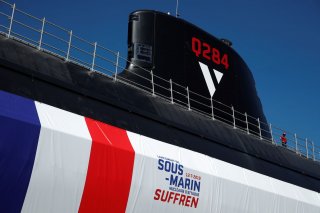Dive, Dive: Meet France’s New Barracuda-Class Nuclear Attack Submarine
They're some high-tech killers.
The latest French attack submarines are smaller than some other countries’ attack subs, but are armed with some of the newest and most advanced torpedoes and anti-ship missiles currently available.
Barracuda-class
The Barracuda-class, or Suffren-class as it is known in France, is the newest series of nuclear attack submarines being laid down in French shipyards. The Barracuda-class will replace the first generation Rubis-class, also nuclear powered.
In keeping with typical attack submarine design, the Barracuda-class will be smaller than ballistic missile submarines, at around 5,000 tons. While this is roughly double the displacement of the preceding class, it is significantly smaller than the attack submarines of other countries—both the American Seawolf-class and Virginia-class are over 8,000 tons, and the United Kingdom’s Astute-class roughly 7,500 tons.
Part of the difference in size is due to the high degree of automation onboard the Barracuda-class. While a Virginia-class sub requires a crew complement of nearly 140, the Barracuda-class will have a small crew of just 65. Though a smaller crew would seem ideal for a modern submarine force, it is not without drawbacks. Fewer hands on deck mean quicker crew rotations and greater crew fatigue, which can lead to mistakes.
In addition to a cylindrical bow sonar, the Barracuda-class will be equipped with a large flank array sonar on its hull sides below the sail, which provides the class with starboard and port listening abilities.
The Barracudas can also carry a commando delivery vehicle just rear of the sail which would probably accommodate 15 passengers for special operations.
Armament
Barracuda-class submarines are veritable arsenals. Though it cannot launch any missiles from vertical launchers like some other attack submarines, its four torpedo tubes can fire land-attack missiles. As I previously wrote, one version of the Exocet can be launched from underwater inside a waterproof container, which ejects the Exocet SM39 missile upon contact with the surface.
A naval variant of the Anglo-French low-observable Storm Shadow (in French service, named SCALP) missile can also be launched underwater via torpedo tubes in much the same manner as the Exocet. In addition to cruise missiles, the Barracuda-class will also fire the new French F21 heavy-weight torpedoes.
Despite the wide variety of munitions the Barracuda-class can carry, it may be limited by its small size—there is only so much internal space available to carry ammunition, and in this respect, smaller is not necessarily better.
Not Getting Any Younger
The original Rubis-class hull was commissioned in 1983, making the class nearly 40 years old. Replacing the Rubis-class will bring French submarines into the same generational group as their NATO counterparts.
Caleb Larson holds a Master of Public Policy degree from the Willy Brandt School of Public Policy. He lives in Berlin and writes on U.S. and Russian foreign and defense policy, German politics, and culture.
Image: Reuters

